Difference between SSD and SSHD
However, now there is also another option, an SSHD drive, which combines the best advantages of both SSD and HDD. So which option is better? The only way to find the answer is through direct comparison. Join TipsMake.com to find out through the following article!
Difference between SSD and SSHD
SSD is a flash storage drive similar to USB but much faster, because it uses NAND memory. SSHD, on the other hand, contains both a regular hard drive and NAND memory, which acts as a large cache (usually 8GB). Unlike HDD drives, both SSD and HDD components of an SSHD are combined into a single piece of hardware.
Both drives are available in 2.5-inch and 3.5-inch sizes, although the SSD is also available in a much smaller M2 version.
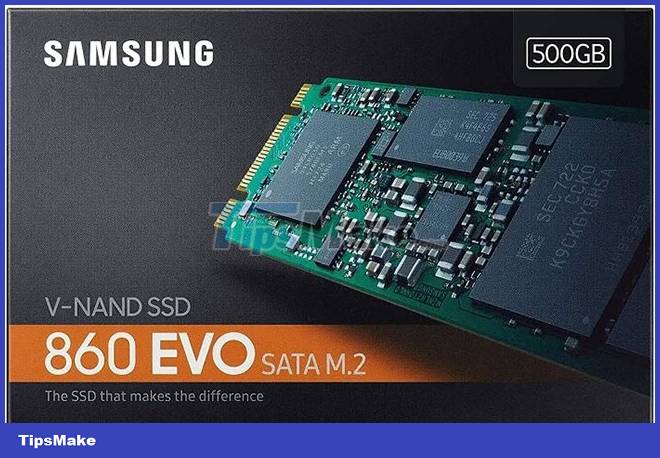
SSDs come in two variants: SATA and NVMe. Only SSHD comes with SATA.
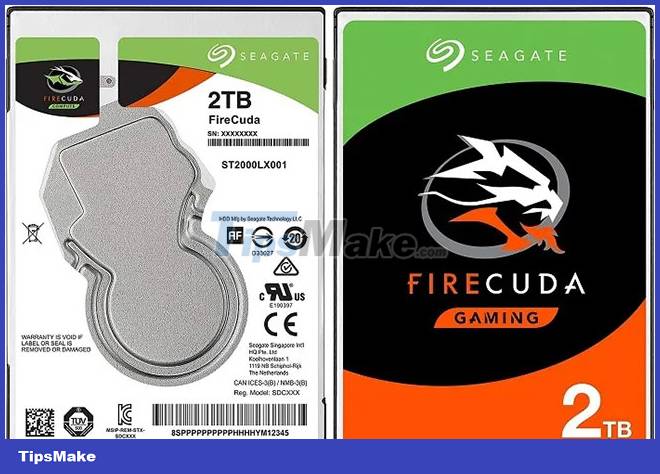
So should choose SSD or SSHD?
1. Raw speed comparison
To determine if an SSD (or SSHD) device is right for your personal computer, test its raw speed using Anvil's Storage Utilities. The tool provides a very accurate view of SSD performance. The following results are for a slightly older (circa 2017) SSD stock that the author used, which had an overall score of 102.83.

A newer SSHD, like the Seagate Firecuda 2TB, produces a higher Anvil score of 220.86 than older SSD devices, according to an Eteknix study.

Another study by Anvil's Storage Utilities Benchmark showed that the Seagate OneTouch 500GB SSD model had an overall score of 2070.95, 10 times higher than the Seagate SSHD device.
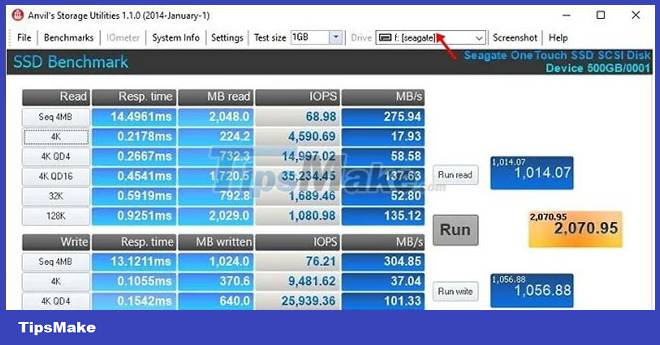
In terms of raw speed performance, newer SSDs score better than SSHD devices. However, some SSHD models may give better performance than older SSD devices. Another way to gauge the speed of your current hard drive is to download this tool using the PassMark software.
2. Compare speed benchmarks
You can find benchmark speeds for SSDs at this link. These benchmark speeds can then be compared to any SSHD drive at this link. There are very few SSHD devices on the market, so they all fall into the category of Hard Disk Drives (HDDs).
In this test, we compared an older, much lower-rated version, the Samsung SSD, with the 2TB Seagate Firecuda SSHD. SSD devices are ranked 1053 out of 1058 SSDs, while SSHD devices are ranked 55th out of 277 HDDs.
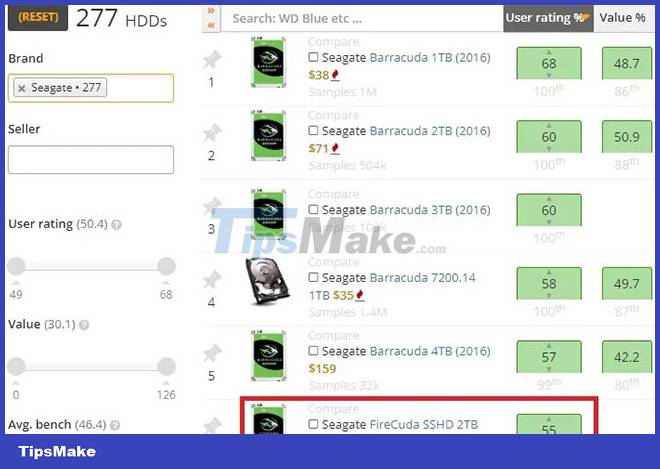
As the figure below shows, for nearly 130000 user benchmark tests, FireCuda SSHD's average read and write speed is 136MB/s.
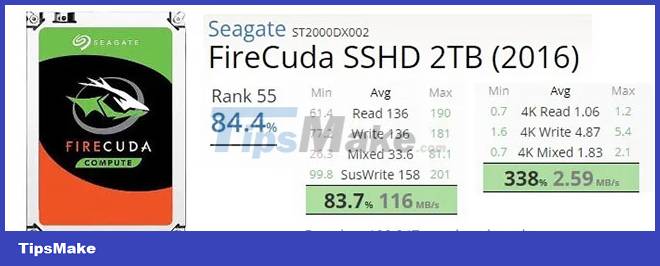
Let's check the same data for SSD. The Samsung 870 QVO SSD device is ranked the lowest of all SSD devices.
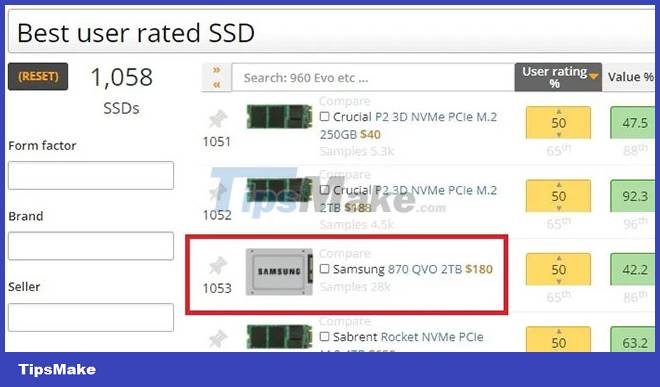
According to 28,279 samples, the read and write speeds for the Samsung 870 QVO SSD are 483 Mbps and 411 Mbps, respectively.
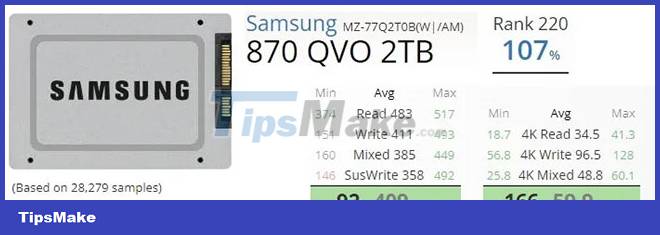
Checking the benchmark performance results, even an older, lower-rated SSD device has much higher read and write speeds (3.2x) than the new, high-rated SSHD device.
3. Compare load times
A gaming site, Eurogamer, was tested to load 4 heavy games, with the same CPU speed. OCZ Trion 100 (SATA-based SSD), Seagate Firecuda 2TB SSHD (as above) and 500GB hard drive were used for comparison.
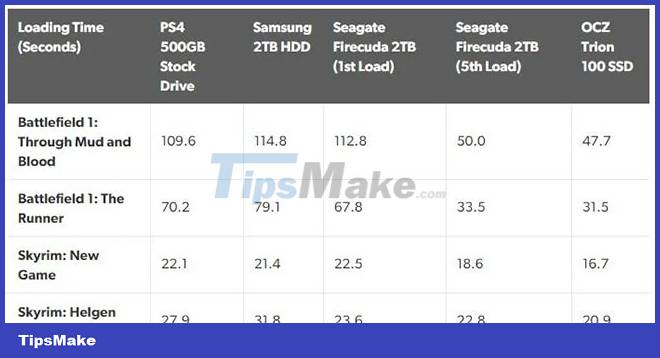
As shown here, in the first load time comparison, the SSD was consistently ahead of the SSHD in all games. With SSHD, the initial application load time in these games is slower because they are launched from the HDD component.
The SSD component of the SSHD is associated with 'frequently accessed data' and 'boot data'. On the 5th test load, all games were downloaded in SSHD almost at the same time as the SSD device.
To illustrate the comparison, the article will examine Seagate's test results for HDD, SSHD and SSD products running on Intel Core i5 and Windows 7 processors. 7200RPM hard drive, Seagate Desktop SSHD and one Intel 320 SSD drive was used. The boot time (shown in the second table) here is the same for both the SSHD and the SSD, since only the flash component is used. Regarding the application load test time (first table), the SSHD device is only a few seconds behind the SSD.
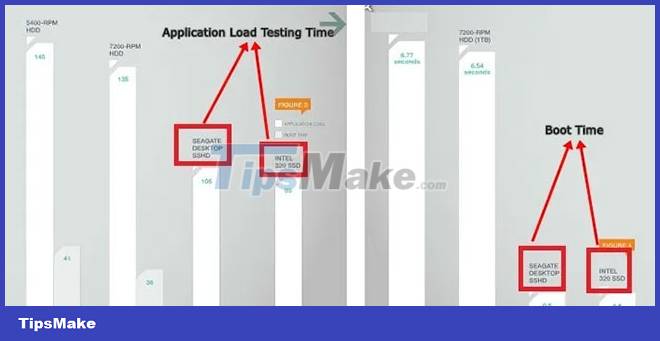
4. Compare price and capacity
In the past, SSHD devices had a slight advantage over SSDs because of their ability to provide larger capacity at a lower cost. But about two years back, that advantage has been lost, as the price of SSDs has dropped significantly. You can buy a 500GB SSD from reputable manufacturers for as little as $50 (about VND 1.5 million). If you want more storage, you can choose the 2TB SSD model for less than $ 150 (about 3.5 million VND). This is even cheaper than the Seagate Firecuda's 2TB SSHD model.
5. Expected lifespan
Many believe that SSD memory will wear out over time because NAND cells degrade with each use (similar to USB). That was indeed true of earlier models, but later generation designs had lower failure rates. Today's commercial SSDs are much more durable over a real life cycle.
For SSDs, an important lifespan parameter is TBW (Terabytes of Write), which indicates the terabytes of data you can write to the drive over its lifetime. Consider the following Barracuda 500GB SSD with 320 TBW. Even if a user writes 100GB of data per day (extremely unlikely in a consumer environment), it will take 8.7 years to reach the lifespan of this SSD. The most recent estimates put an age limit for SSDs at around 10 years, but the latest SSD models can easily last much longer than that.
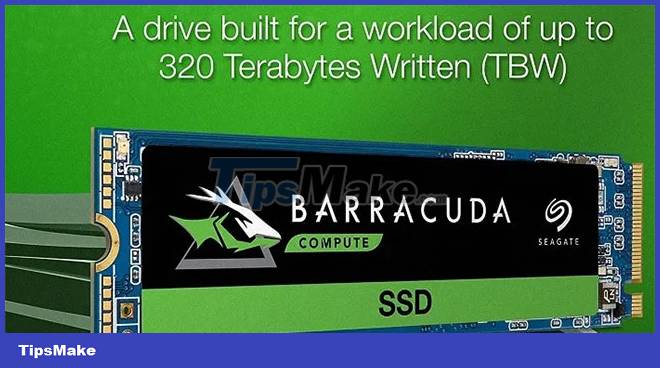
Even with SSHD, you're getting good longevity. For example, this Seagate FireCuda SSHD has a load/unload cycle of 600,000 according to its datasheet.
This refers to software controlled power on/off cycles. Even if you reboot and boot the SSHD system continuously 150 times a day (extremely unlikely in a consumer environment), the SSHD will still have an extended lifespan of up to 10.9 years. In fact, SSHD persists even after passing the number of recorded load/unload cycles. The drive failure rate due to program cycles is much less because it uses both the SSD and HDD parts more efficiently than if they were separate.
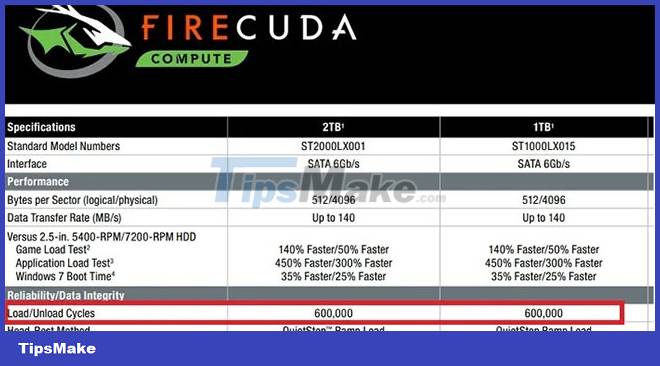
SSD or SSHD better?
If you are a gamer looking for pure raw and benchmark speed then an SSD is the better choice. Other than that, both are similar in terms of cost. If you need more storage space with boot speed and quick access to frequently used applications, SSHD may be a better choice, as it offers faster load times when used repeatedly.
If storage space is all you need, you can also use a combination of SSD and HDD (as a secondary drive). SSD is for system files and applications, while HDD is for storing backups, such as photos, media files, etc.
You should read it
- Differences between SSD and HDD hard drives
- Instructions on how to create a RAM drive on Windows
- Find out how SSD drives work
- Solid-state drives (SSDs) and some things you should know
- Difference between Flash drive and Pen drive
- Why is the thicker the SSD drive?
- 7 reasons to upgrade to an SSD
- 11 things to do when using SSD hard drive on Windows 10
May be interested
- Difference between GDDR RAM and RAM
 gddr ram and system ram are common terms that you will come across in the desktop world. while these terms may seem similar and interchangeable, they are not.
gddr ram and system ram are common terms that you will come across in the desktop world. while these terms may seem similar and interchangeable, they are not. - Difference between Internet and Web
 what are the similarities and differences between the internet and the web? for those who understand information technology, these two concepts are no longer strange, but for those who are just starting to learn, they may not clearly understand the concept as well. their effects, the content below, taimienphi will show you the difference between the internet and the web.
what are the similarities and differences between the internet and the web? for those who understand information technology, these two concepts are no longer strange, but for those who are just starting to learn, they may not clearly understand the concept as well. their effects, the content below, taimienphi will show you the difference between the internet and the web. - Difference between NUC and SBC
 people often compare intel's next unit of computing (nuc) devices to single-board computers. the comparison is based on the fact that many people think that these two devices are more or less similar. although not completely unfounded, this assumption is false.
people often compare intel's next unit of computing (nuc) devices to single-board computers. the comparison is based on the fact that many people think that these two devices are more or less similar. although not completely unfounded, this assumption is false. - The difference between TCP and UDP protocols
 you may have seen tcp and udp when setting up port forwarding on the router or when configuring the firewall software. these two protocols are used for different data types.
you may have seen tcp and udp when setting up port forwarding on the router or when configuring the firewall software. these two protocols are used for different data types. - HP Probook 450 G1 beautifully designed, powerful configuration
 not only equipped with strong configuration, probook 450 g1 also has quite good battery life, sshd hybrid hard drive has faster access speed and storage capacity no less than traditional hdd.
not only equipped with strong configuration, probook 450 g1 also has quite good battery life, sshd hybrid hard drive has faster access speed and storage capacity no less than traditional hdd. - If you can find a difference in 10 seconds, you're really a genius!
 if you can find a difference in 10 seconds, you're really a genius! try fastness with 6 images below!
if you can find a difference in 10 seconds, you're really a genius! try fastness with 6 images below! - The difference between Sass and SCSS: Which CSS Preprocessor is right for you?
 the difference between sass and scss syntax is very difficult to detect. so, make sure you understand them before making a choice.
the difference between sass and scss syntax is very difficult to detect. so, make sure you understand them before making a choice. - The difference between the URL and the URI
 the terms uri and url are often used interchangeably, but they are not exactly the same. a url is a specific type of uri that provides a location / method of access.
the terms uri and url are often used interchangeably, but they are not exactly the same. a url is a specific type of uri that provides a location / method of access. - What is the difference between HDR and 4K?
 when buying a tv, the terms 4k and hdr may come across. both of these technologies improve image quality. however, they do this in very different ways.
when buying a tv, the terms 4k and hdr may come across. both of these technologies improve image quality. however, they do this in very different ways. - The difference between MP3 and MP4
 in this article, we will explain the differences of mp3 and mp4 that people need to know. at the same time, after reading, readers will know exactly what file types they need.
in this article, we will explain the differences of mp3 and mp4 that people need to know. at the same time, after reading, readers will know exactly what file types they need.










 7 common mistakes with gaming laptops and how to avoid them
7 common mistakes with gaming laptops and how to avoid them 8 other uses of external hard drives/NAS besides file storage
8 other uses of external hard drives/NAS besides file storage The reason Thunderbolt 3 is the preferred connection standard
The reason Thunderbolt 3 is the preferred connection standard How to Unlock iPhone 6S and iPhone 7
How to Unlock iPhone 6S and iPhone 7 How to Set Up Two Computer Monitors
How to Set Up Two Computer Monitors How to Determine iPad Model / Version
How to Determine iPad Model / Version